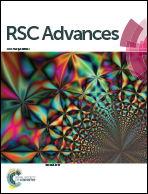In situ synthesis of highly-active Pt nanoclusters via thermal decomposition for high-temperature catalytic reactions†
Abstract
Noble metal nanoclusters are highly desirable for achieving superior catalytic performance in diverse catalytic reactions. However, they usual suffer from fast surface oxidation before use, which substantially degrades their activities. Herein, we address, for the first time, an in situ preparation strategy towards well-dispersed, ligand-free Pt nanoclusters (1.28 nm) supported on carbon spheres (CS) for high-temperature catalytic reactions. The nanoclusters are formed through thermal decomposition of platinum(II) acetylacetonate concomitantly with the preheating of the reactor and directly serve as catalysts for the dehydrogenation of methylcyclohexane (MCH) without deoxidization pretreatment. Nearly 97% of MCH is converted to hydrogen and toluene over the 0.68 wt% Pt/CS catalyst at 320 °C, and the highest hydrogen evolution rate reaches a value of 575 mmol gmet−1 min−1. Besides, the reaction equilibrium is achieved much faster than using catalysts prepared ex situ that require deoxidization of Pt species by hydrogen generated during the initial stage of the reaction.


 Please wait while we load your content...
Please wait while we load your content...